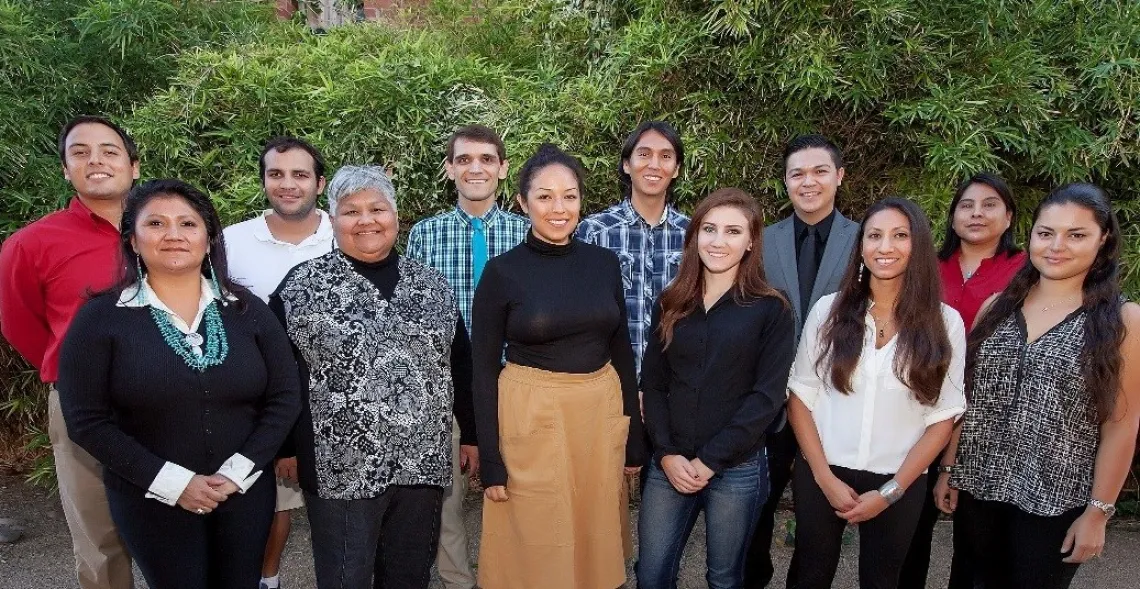Improving Access for Indigenous Students

By Elizabeth Labiner
Many members of our community know that the UA is a land-grant university, but not everyone may have thought through the historical and geographical implications of what that really means. One thing it means, as Vice Provost for Inclusive Excellence and Senior Diversity Officer Jesús Treviño points out, is that the university resides on the traditional territory of the Tohono O'odham people. After the federal government took control of this land, it was eventually designated as the site for the University of Arizona.
While UA -- along with many other colleges and universities -- is located on traditional tribal territory, American Indians are the most underrepresented minority group in higher education science and engineering programs. Donna Treloar, Director of Graduate Diversity Programs, says, “Nationwide, only 35 Ph.D.s in science and engineering were awarded to American Indians and Alaskan Natives in 2001. In fact, the National Science Foundation indicates that in the ten years from 1991 to 2001, only 149 American Indians received doctorates.”
For the past fourteen years, though, the University of Arizona/Alfred P. Sloan Foundation Indigenous Graduate Partnership (UA/SIGP) has been working to improve access and inclusion of indigenous scholars. The partnership is designed to address the national need for highly trained Native Americans who will spur economic development in their communities and occupy leadership positions in colleges, universities, government and industry.
The University of Arizona is a particularly good fit for Native American scholars for many reasons, explains Faculty Director for Diversity and Inclusion Frans Tax:
Almost 1 in 20 Arizona residents identify as Native American, and it is one of our goals as educators to support all of the state’s communities. This is particularly important for Native American students, as many are committed to using their education at the UA to bring jobs, skills, education and services to their home communities. We also have a history of success with students: we are the top PhD granting institution to Native American scholars.
Further, Treloar elaborates,
Arizona is home to 22 federally recognized tribes/nations, so we have a large Native American population in the state and a critical mass of Native American students at the UA. Native American students appreciate having a community of Native American scholars at the University. Other factors include good mentoring – we do have a few Native American faculty that can serve as role models and advise students on issues particular to Native American tribes and nations, [such as] Tribal IRB processes and Tribal Ecological Knowledge.
In addition to faculty advisors, the UA also provides academic and financial advising; students are linked to important services and local Native American community resources and engagements, like the Tucson Indian Center and Indian Health Services. All of this contributes to the success of the UA/SIGP. Just last year, the Sloan grant received funding for a further three years.
The success of the UA/SIGP is, of course, best measured by the success of its alumni. Treloar notes that the program’s scholars are exceptional, and are making their mark in many different fields: “The first Oglala Lakota woman to be awarded a Ph.D. in Environmental
Engineering was a UA/SIGP awardee. She is currently an Assistant Professor in
Sustainable Engineering, working on tenure at Arizona State University.” Four alumni have gone into medicine, and others are working as researchers, scientists, engineers, business owners, industry leaders, or as directors for their tribes or nations.
The University of Arizona’s success in this program has led to the UA/SIGP’s expansion to three other universities: Purdue University, the University of Montana, and the University of Alaska-Anchorage. Together, this consortium has developed a student exchange program, a research symposium hosted at Arizona, and an alumni network to continue forging connections as the programs grow and produce new graduates.
To learn more about the University of Arizona/Alfred P. Sloan Foundation Indigenous Graduate Partnership, visit the program website at https://grad.arizona.edu/diversityprograms/uasigp.

